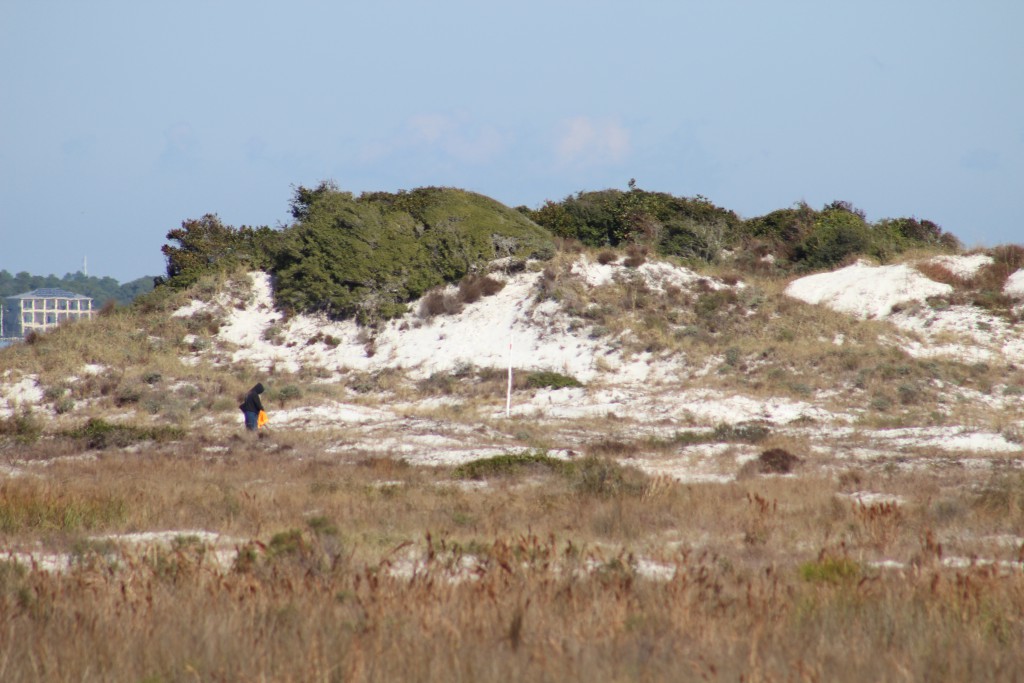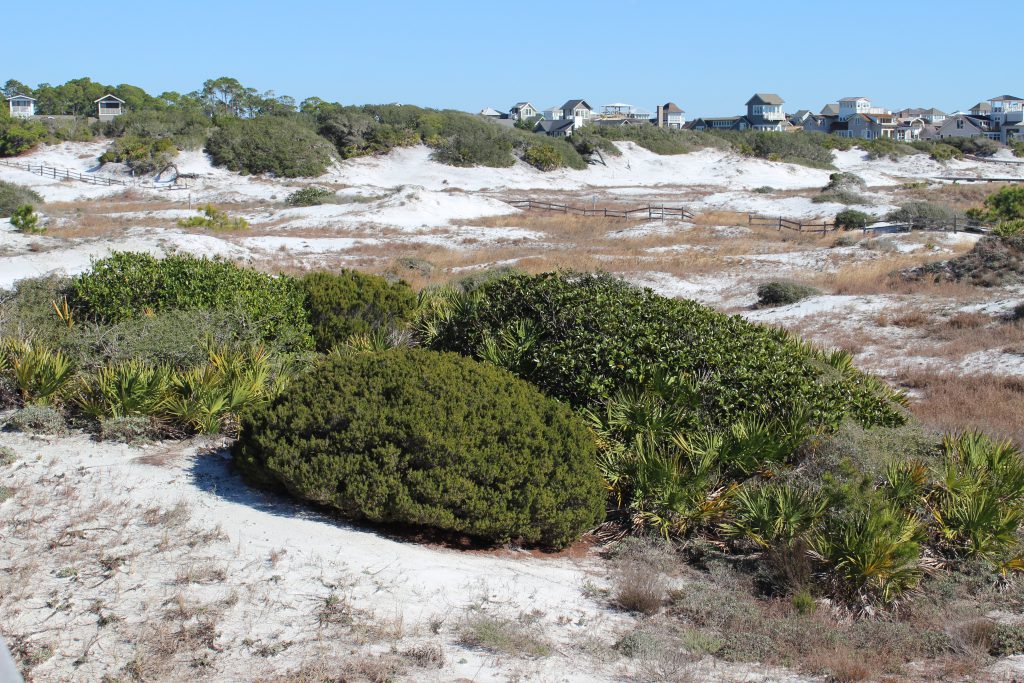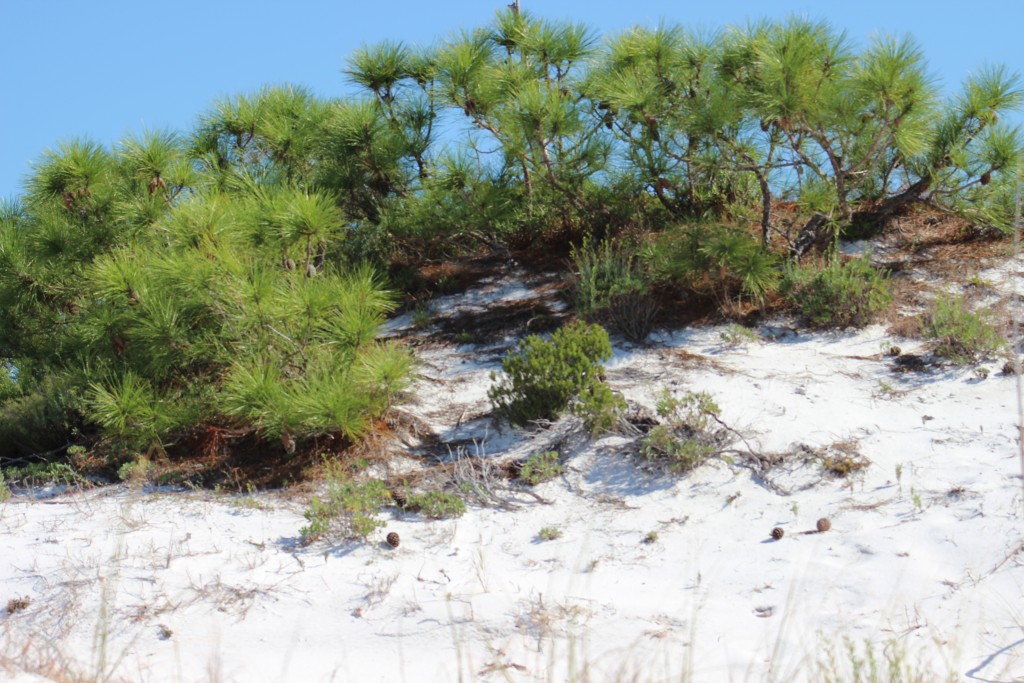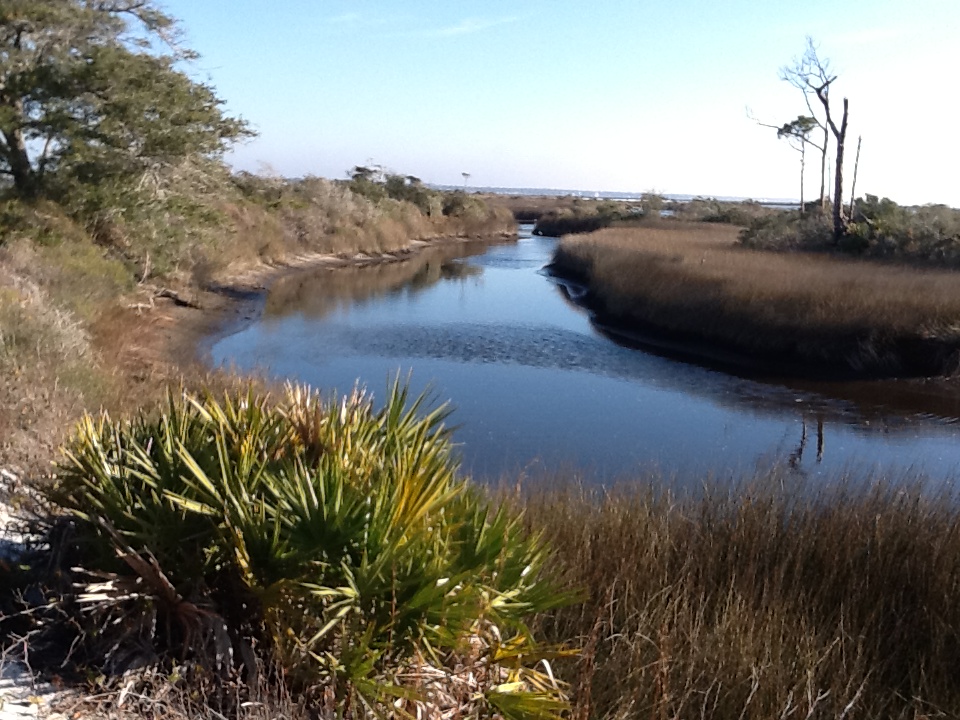The habitats of a barrier island are defined and driven by the plant communities there. Seeds from the mainland must first reach the new island and they can do so using a variety of different methods. Some come by wind, some by water, some by birds and other wildlife. Some of these germinate, some do not. Those that do, do so on a sandy island with little or no relief and must deal with the winds off the Gulf, which has salt spray. Many of these mainland plants cannot tolerate this and never make it. But some can… and do.

These early plant communities are known as the pioneer community – meaning the earliest settlers. In the process of succession pioneer communities are made of creatures that can tolerate the harshest conditions, the early days of ecosystem development. There are usually few nutrients, extreme climatic conditions, and for the animals, few prey to select from. But these pioneers are adapted to survive in these conditions and over time alter the conditions so that other creatures can move in.
For the barrier islands, grasses seem to be the plants who do best in the early stages of succession. Though small shrubs and trees may reach the island, the high winds and salt spray will not allow growth. There are numerous species of grasses that can live here, the most famous are the sea oats (Uniola paniculata). This grass can be found on the smallest of barrier islands. Their fibrous root system runs beneath the ground sprouting new grasses all over. Their seed heads blow with the wind starting new populations of plants on other locations and the landscape is soon dominated by them. However, there are other species as well. Panic grass (Panicum amarium), salt hay (Spartina patens), and beach elder (Iva imbricata) to name a few. All these grasses can tolerate the wind and salt spray as well as the low nutrient, low rainfall often found on these islands. They also all have fibrous roots systems that not only connect grasses across the land scape but also trap blowing sand – forming dunes.

The dunes closest to the Gulf are dominated by grass due to the higher winds and salt spray there. These are called the primary dunes and create one of the first habitats on the island for wildlife. The primary dunes vary in height and how far from the Gulf they range but they do form a wind break for portions of the island landward of the Gulf.
Here smaller shrubs and plants like seaside golden (Solidago sempervirens) and seaside rosemary (Ceratiola ericoides) can grow. With less wind their seeds will germinate and survive. What wind is still there forces the plants to grow in a round shape resembling green sheep on a white field, instead of white sheep on a green field. My professor referred to them as “beach sheep”. This area of the barrier island is called the secondary dune and includes other species such as false rosemary (Conradina canescens), square flower (Odontonychia corymbosa), and sandhill milkweed (Asclepias humistrata). Though they cannot tolerate the high winds as grasses do, they do have to tolerate climatic extremes and low rainfall.

These secondary dunes vary in elevation and can become taller than the primary dunes. In the low areas between dunes are areas where freshwater water can collect and form ephemeral ponds. These areas are known as swales and create unique habitats much sought after by some wildlife. More bog like plants grow here such as water dock (Rumex orbiculatus) and marsh pink (Rhexia nashii) but also includes the carnivorous plants like the sundew (Drosera rotundifolia). There are many insects who used these ephemeral ponds and many spiders and sundews to take advantage of this.
Behind the larger secondary dunes, the wind is even less, and the dune wind breaks higher. Here trees can germinate, if they can tolerate the climatic conditions, and grow. Though the species that grow out there are some of the same you find on the mainland, here they grow differently. Barrier island trees tend grow out, not up, to avoid direct contact with wind and salt spray. And, when they do reach the wind the portion of tree directly facing the wind tends to be stunted in growth, giving it the appearance that someone has “combed” the tree back towards the bay – something they call wind sculpting. Trees that seem do well in what they call the tertiary dune include sand live oak (Quercus geminata), pine (Pinus sp.), and magnolia (Magnolia grandiflora). Yaupon holly (Ilex vomitoria) and even cactus like the prickly pear (Opuntia humifusa) and the devil’s joint (Opuntia pusilla) can be found growing here.

Tertiary dunes are some of the largest on the island, with elevations reaching 50 feet or more. These provide excellent wind breaks from the Gulf and allow the formation of salt marshes along the bay side shoreline. Marshes are habitats dominated by grass, but these grasses must be able to tolerate periods emersed in salt water, at least at high tide. Close to the dunes the marsh is dominated by dense stands of black needlerush (Juncus roemerianus). In some locations within the needlerush marsh are areas of bare sand known as salt pans. These are low areas within the marsh where water remains when the tide recedes. These small marsh ponds begin to evaporate in the intense sunlight and the salinity increases to a level where it kills off much of the plant life leaving an area of bare sand. These salt pans are used by some wildlife on the islands. Eventually you will reach the waters edge where smooth cordgrass (Spartina alterniflora) grows. This marsh grass can tolerate water for longer periods than needlerush and supports both island wildlife and estuarine fisheries.

As you can imagine, the process of establishing the pioneer community of grasses on a new, small sand bar, to an island filled with dunes and vegetation takes time – years, decades, maybe centuries – but eventually it will reach what we call the climax community and provides a variety of habitats to support wildlife.
In part 3 we will begin to look at how animal species colonize the islands as these habitats form.
- Rattlesnakes on Our Barrier Islands; Part 4 – Thermoregulation - December 29, 2025
- Rattlesnakes on Our Barrier Islands; Part 3 – Envenomation - December 22, 2025
- St. Joe Red Tide Claiming Terrapins - December 15, 2025
